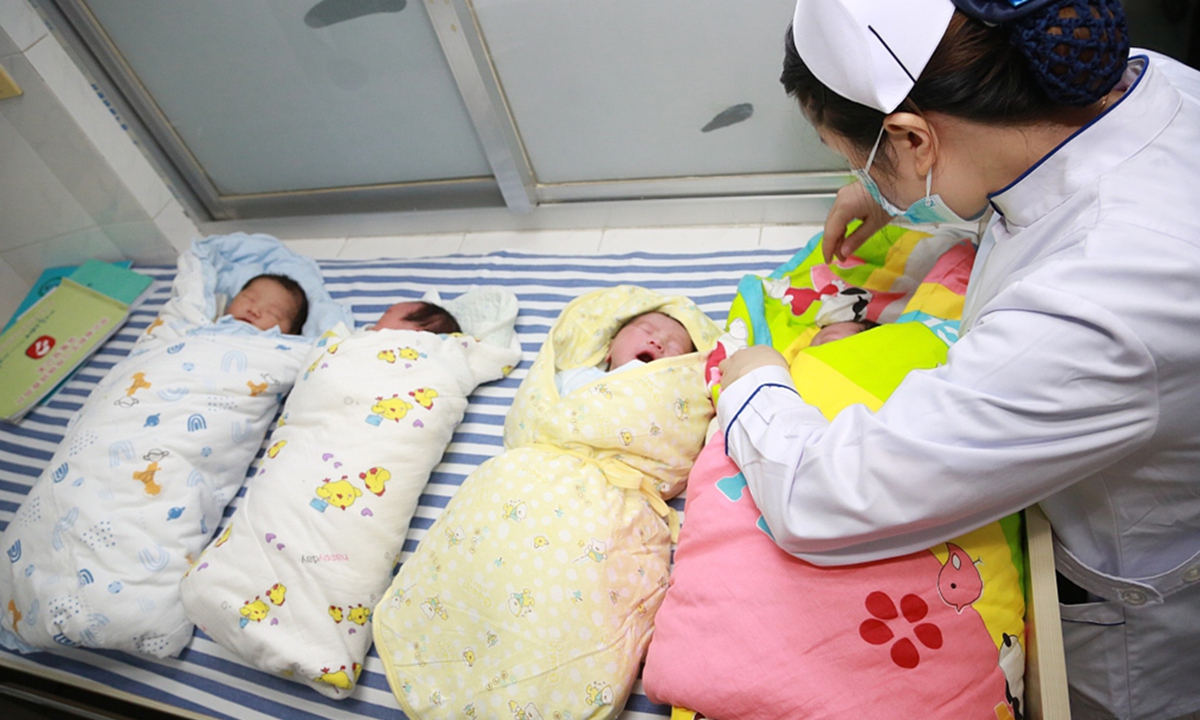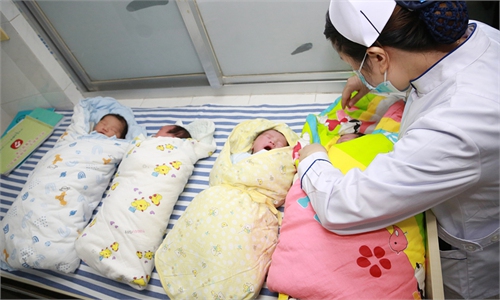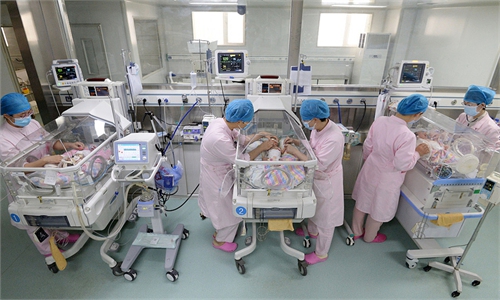South China’s Shenzhen plans to subsidize 3rd child families up to $2,800 over three years

Photo: VCG
Shenzhen in South China's Guangdong Province, one of China's megacities with a population of 17.68 million, started on Monday to solicit public opinions on the city's policy of childcare subsidies. The subsidies for "third child" families can be accumulated up to 19,000 yuan ($2,800) over the course of three years.
China has been facing major challenges in its population structure over the past few years, with its population growth continuing to slow down, the falling marriage rates year-by-year and the declining birth rate due to the impact of the COVID-19 epidemic.
According to the National Bureau of Statistics, China's fertility rate - the number of children a woman is expected to have during her life - stood at just 1.3 in 2020, a relative low level.
In 2021, the number of newborns in China dropped to 10.62 million and China's fertility rate fell to 1.15, lower than the average level of developed countries, and far from the fertility level of 1.8 proposed by the national population development plan for 2016-30.
The low fertility rate has led to a series of population challenges, which will have a significant and far-reaching economic and social implications.
In Shenzhen, the number of newborns of permanent residents in 2021 was 201,300, down by 25.25 percent from the birth peak in 2017, according to the draft instruction of the Health Commission of Shenzhen Municipality.
The number of married women has declined for seven years in a row since 2015. In 2021, married women of childbearing age among the city's permanent residents dropped to 3.76 million, 357,600 fewer than the peak in 2015, a decrease of 8.68 percent.
The fertility rate in Shenzhen has shown a sustained downward trend over recent years, meaning there are several long-term and difficult challenges for policymakers to navigate. Therefore, it is necessary to introduce birth support measures as soon as possible, to effectively release the fertility potential, slow down the aging process, and enhance the overall vitality of the society.
The health commission has considered multiple factors including Shenzhen residents' consumption expenditure per capita and childcare costs and initially drafted the standards for childcare subsidies in accordance with a progressive and differentiation thinking, according to the draft instruction.
According to the draft, Shenzhen plans to issue a one-time maternity subsidy of 3,000 yuan to the families who give birth to their first child and register their child's household in the city. Apart from that, these families can get a 1,500-yuan childcare subsidy per year.
Both subsidies constitute an accumulated 7,500 yuan over a course of three years. That is to say, these families can get an average annual subsidy of 2,500 yuan from their first child over three years.
Families who give birth to their second child will be eligible for a one-time subsidy of 5,000 yuan, with an accumulated figure of 11,000 yuan over three years.
It is significant that families give birth to their third child can get a one-time subsidy of 10,000 yuan and an annual subsidy of 3,000 yuan, with an accumulated subsidy of 19,000 yuan over three years, according to the draft.
All these subsidies will be stopped until the child reaches the age of 3. Additional children will be subsidized according to the standards of the third child.
Besides Shenzhen, Jinan in East China's Shandong Province also released its implementation plan to improve the fertility policy and promote long-term and balanced population development.
According to the plan, families with a second or third child born since January 1, 2023 can access a childcare subsidy of 600 yuan per month for each child until the child reaches the age of 3.
The plan also noted the maternity and paternity leave policies for local residents. Newborn mothers can enjoy a maternity leave of 158 days while their spouses can enjoy paternity leave no less than 15 days. Apart from that, both parents of infants aged 3 and below can enjoy at least 10 days of childcare leave every year.
Moreover, Harbin in Northeast China's Heilongjiang Province, Changsha in Central China's Hunan Province, Huanggang in Central China's Hubei Province and Southwest China's Yunnan Province, all have rolled out stimulating policies to subsidize families with multiple children and to encourage couples to have more children.
It is impossible to significantly increase the fertility rate simply by giving subsidies and extending holidays from the perspective of demography and the practice of Western countries, said Song Quancheng, a professor from the School of Philosophy and Social Development, Shandong University, according to a report by Shandong Toutiao News.
The history of international population fertility development proves that the more education women receive, the lower the fertility rate becomes, and the fertility rate is in inverse proportion to economic and social development, Song said.
Global Times


